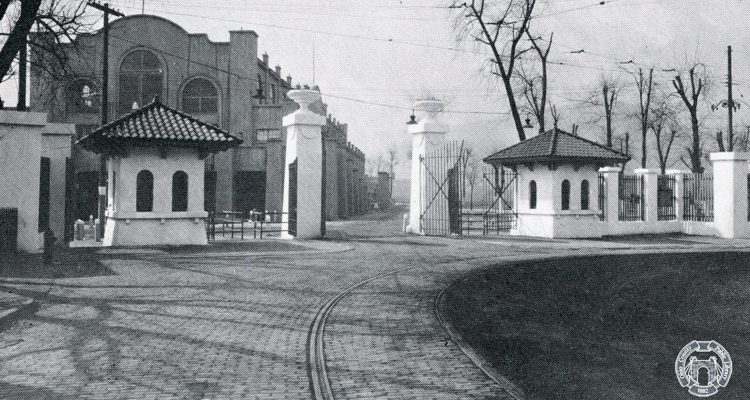Writer’s Note: In recent years, the Wheeling Island Hotel-Casino-Racetrack used the former Wheeling Roller Rink as a storage facility. On Dec. 31, the building and its contents were lost to a devastating accidental electrical fire. Wheeling Island General Manager Kim Florence told Weelunk, “We are saddened by the loss of the Exposition Hall. It served Wheeling Island well for nearly a century in many capacities ranging from a skating rink to, most recently, a storage area for the casino. We are currently focused on the safe evaluation of the remains and proper cleanup and disposal of the burnt items. At this time, we do not have any future plans for the site.”
“Boys and girls and music! Why do they need gin?!” – Annie, the Bailey family’s housekeeper, “It’s a Wonderful Life”
Through the decades, the teenage dating scene has had its preferred destinations. In the ’80s, it was the shopping mall. In the ’50s, it was the neighborhood soda shoppe. In the 1940s, one such popular hot spot for couples was the Wheeling Roller Rink on Wheeling Island.An ideal date night activity during that decade, roller skating mixed young love with movement and music — a potent combination. Skating was touted as wholesome recreation and entertainment for all ages. “Overweight? Roller skate!” was a popular advertising mantra of the era.
Everyone from youngsters to senior citizens seemed to be swept — or dare we say — rolled away by the craze. Girl and Boy Scout troops earned roller skating badges to display on their uniforms. Mothers and their preschool children enjoyed skating together in the afternoons. Long before the roller disco phenomenon of the late ’70s, couples from older generations learned to “figure skate” to waltzes and tangos and used the rink as a stage to showcase the beauty and fluidity of their moves.
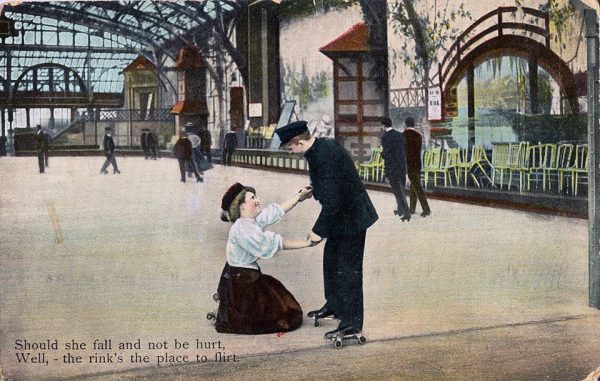
STATE FAIRGROUNDS
According to the Ohio County Public Library online archives, the rink at the south end of Wheeling Island was constructed in 1924 by the West Virginia Exposition and State Fair Association as part of the state fairgrounds. The Exposition Hall itself was built on an elevated foundation to help protect it from periodic Ohio River flooding. In addition to the spacious hall, there was a dirt racetrack, stables and a small amusement park on the fairgrounds. The property was utilized in that capacity until 1937. The exhibition building housed a roller rink for most of its existence until the final call of “All Skate!” rang out in 1988.
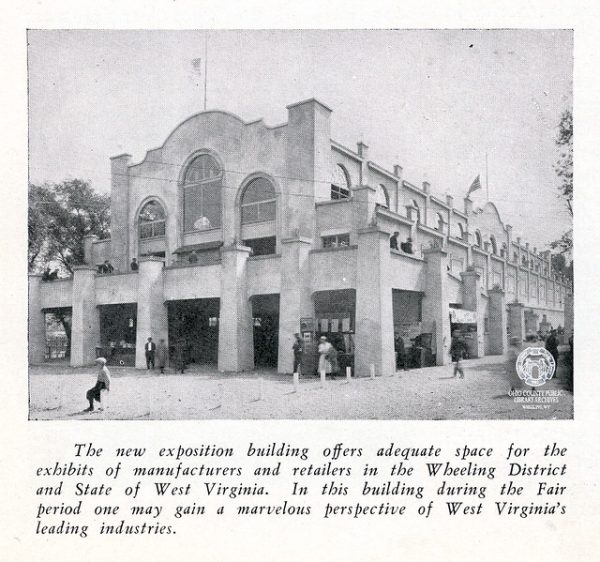
SKATING’S GOLDEN AGE
Also in 1937, the Roller Skate Rink Owners’ Association was established, and what was heralded as the “Golden Age of Roller Skating” commenced. Roller skating was a very popular wartime stress reliever and recreational activity. At the height of the sport’s popularity, about 5,000 rinks were in operation nationwide, including the one here in Wheeling. As skating’s popularity with the masses soared, an estimated 18 million skaters of all ages took to their wheels. Watch this short documentary about the heyday of roller skating, “This is Roller Skating.”
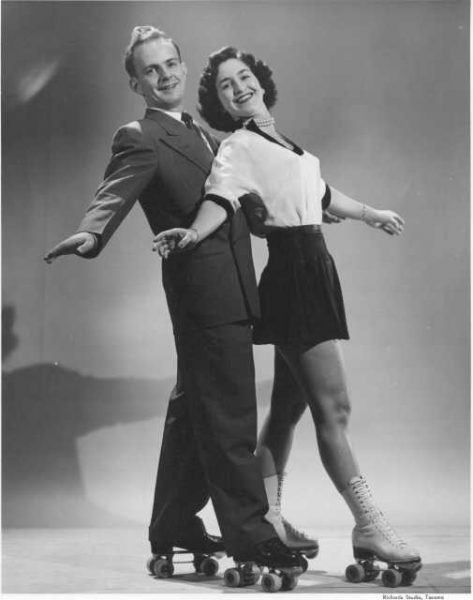
By 1944, our local rink was owned by Cecil Milam and was known as the Milam Roller Rink. Milam also owned a rink in nearby Washington, Pennsylvania, and he put the Wheeling skating business up for sale to concentrate his management efforts in Washington.
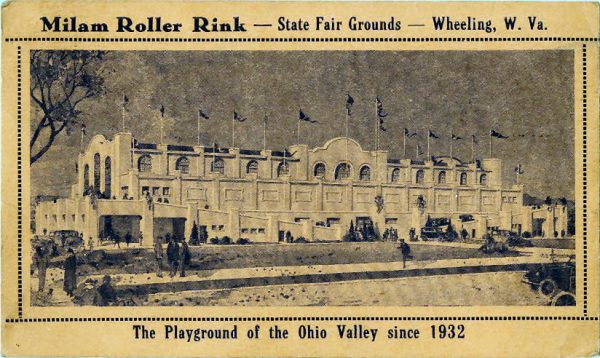
THE WILLIAM SCHREYER FAMILY
Enter the Schreyer family from Johnstown, Pennsylvania. Dad William and his business partner owned a rink there and saw an opportunity to expand in a new location. Weelunk learned the story of the Schreyers’ management of the rink from son William Schreyer, who is now 89 and still living near the Warwood home where he grew up.
“My dad and older brother moved to Wheeling to buy the rink from Mr. Milam toward the end of World War II,” Schreyer said. He and his mother and siblings followed a few months later.
However, wartime brings with it complications on the homefront. It turned out that the building housing the rink was leased out to the Hoover Company for the manufacture of war materials. The roller skating business would have to take a temporary backseat to the urgent needs of Uncle Sam. But despite this setback, the senior Schreyer and the Hoover Company were able to reach an agreement that the rink, now named the Wheeling Roller Rink, would remain in operation until the weekend after Hoover took possession of the property.
“At that point, my father moved the rink to the second floor of the Market Auditorium that was located on the Market Plaza. The rink stayed there until after the war ended,” Schreyer recalled.
He said that once the war was over, Wheeling Downs and the Exposition Hall were purchased by notable Wheeling business owner and purported mobster “Big Bill” Lias. Schreyer’s father leased the hall from Lias and returned the rink to the Expo Hall building. Schreyer upgraded the rink infrastructure during that time, adding a dropped ceiling, fresh lighting and more durable reinforcement girders. “A Mr. Teeter from the north end of the Island did most of that work for my father,” remembered Schreyer.
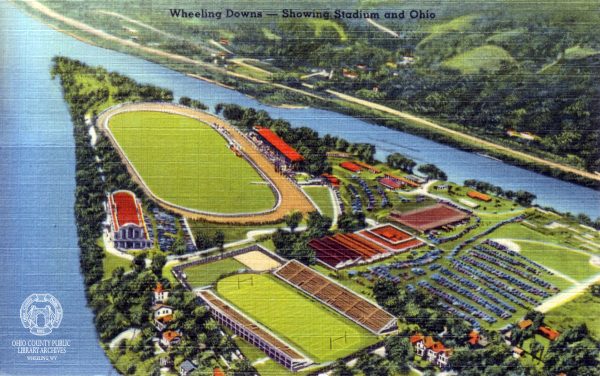
“Business was great after the war,” Schreyer stated. “The war was over, and there was no TV yet.” He said that people of all ages came to the rink, and it became a booming hub of social activity. Helping their father manage the workings of the rink was the perfect job for the teenage Schreyer and his siblings.
“We all grew up working at the rink. I worked 8-11 p.m. every night of the week,” Schreyer recalled. Though he remembered usually being far too busy to skate, he revealed that if a pretty girl caught his eye, he would find a way to sneak in a quick spin around the floor with her. “I did like skating, but to be honest, I always liked baseball better!” Schreyer laughed.
Times were very different during the days before desegregation and women’s liberation. Weekday afternoon skating sessions were marketed for housewives wishing to maintain their girlish figures in an effort to hold the attention of their husbands. During the Jim Crow era, African-Americans had a separate skating session on Monday evenings where they could enjoy the social and recreational atmosphere offered by the rink.
Schreyer recalled that one New Year’s Eve during that era, over 900 skaters rang in the new year at the rink. Live organ music was the soundtrack for this and all rink festivities. Schreyer said these were great times, and he has many fond memories of his family’s time spent in charge of the rink.
RECENT YEARS
Over the years, there would continue to be a roller rink off and on in the Exposition Hall. Skate styles would evolve and eventually morph into the modern-day Rollerblades with which we’re now familiar.

Many of us can remember climbing the sloping concrete ramp that led inside to the rink, skates tied together and slung over our shoulders. Maybe it was date night or a Friday evening hanging out with high school pals. Or perhaps it was for a kid’s birthday party, complete with pizza, cake and individual ice cream cups devoured in three half-melted bites with wooden spoons.
Though the rink would be renamed several times as years passed, the basic premise of its operation remained the same — people enjoying the music and the feeling of freedom that spinning your wheels can bring.
• A lifelong Wheeling resident, Ellen Brafford McCroskey is a proud graduate of Wheeling Park High School and the former Wheeling Jesuit College. By day, she works for an international law firm; by night, (and often on her lunch breaks and weekends) she enjoys moonlighting as a part-time writer. Please note that the views expressed in her writing are solely her own and do not necessarily reflect those of anyone else, including her full-time employer. Through her writing, Ellen aims to enlighten others on causes close to her heart, particularly addiction, recovery and equal rights. She and her husband Doug reside in Warwood with their clowder of rescued cats, each of whom is a direct consequence of his job as the Ohio County Dog Warden. Their family includes four adult children, their spouses and several grandkids.


